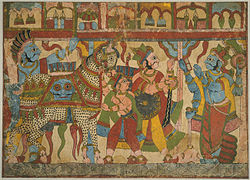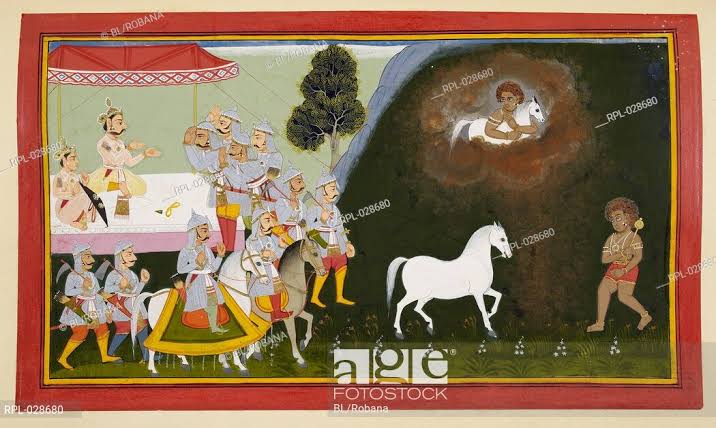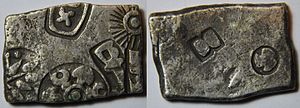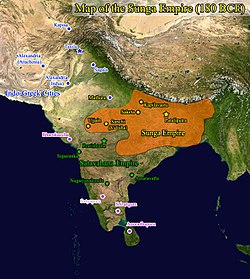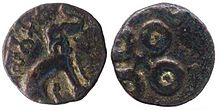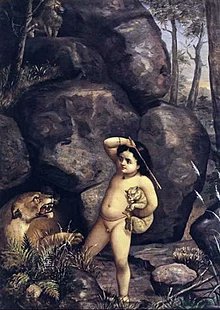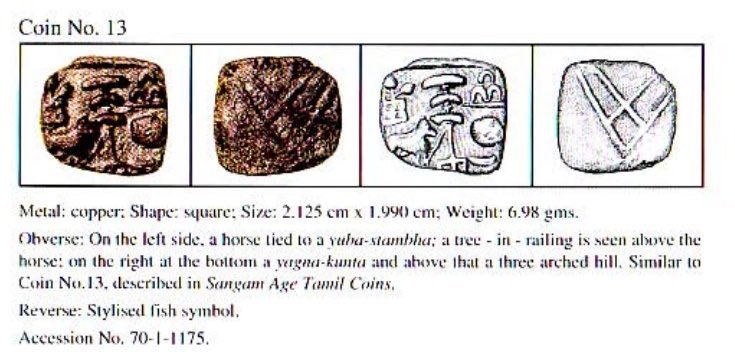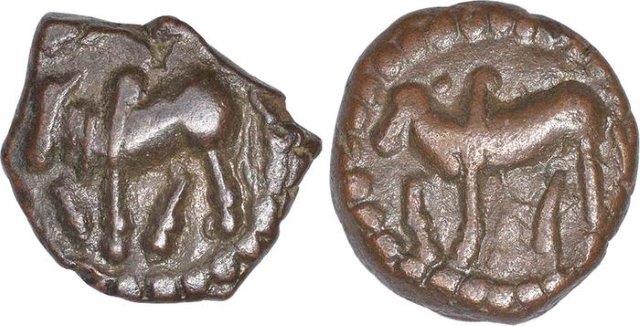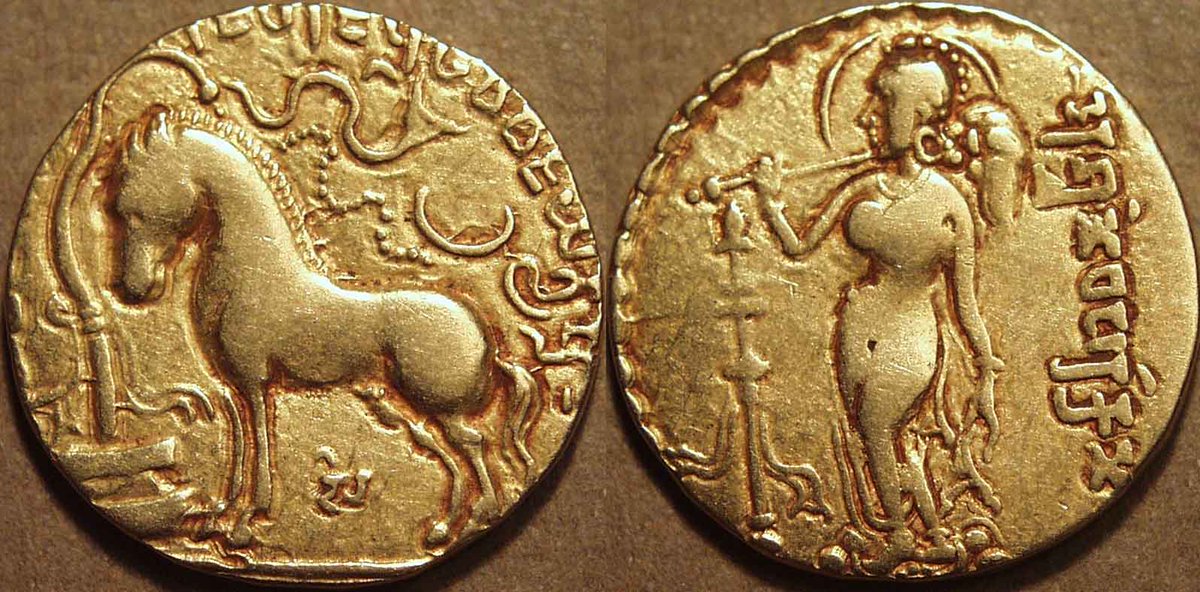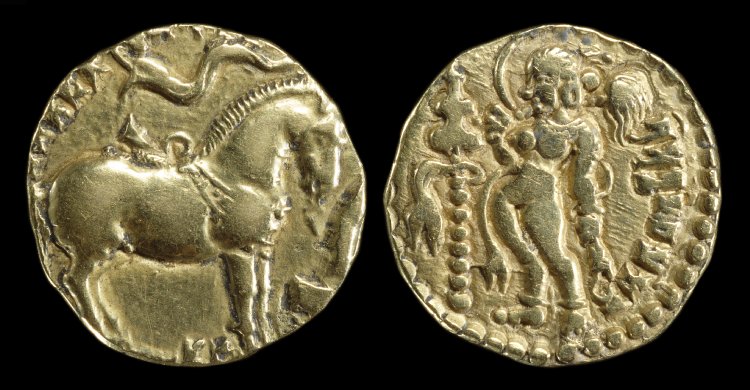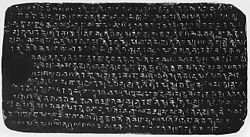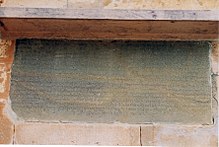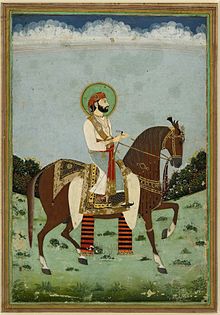A Note on Ashvamedha Yagya
This note will include the Ashvamedha yagya, its genesis, the ritual itself, and the list of rulers who have performed Ashvamedha.
Image of a portrayal of Yudhistara& #39;s Ashvamedha Yagya.
This note will include the Ashvamedha yagya, its genesis, the ritual itself, and the list of rulers who have performed Ashvamedha.
Image of a portrayal of Yudhistara& #39;s Ashvamedha Yagya.
In short, the Ashvamedha is a horse sacrifice ritual. It was used by the ancient kings to prove their status as a imperial sovereign.
A horse accompanied by a contingent of King& #39;s army would be released to wander for a period of one year.
If any adjoining state, tries to capture the horse, it would mean a direct challenge to king& #39;s sovereignty and hence, this act would lead to battle.
If any adjoining state, tries to capture the horse, it would mean a direct challenge to king& #39;s sovereignty and hence, this act would lead to battle.
If, however, no enemy state has managed to kill or capture the horse, his state would be considered a part of king& #39;s dominion.
After a period of one year, the horse would be guided back to the king& #39;s capital, if unmolested.
After a period of one year, the horse would be guided back to the king& #39;s capital, if unmolested.
The horse will then be sacrificed and the King will be declared as an undisputed sovereign ruler.
The Yajur Veda ( 7.1-5, 22-25,)has the full details of the ritual of Ashvamedha, along with Satapatha Brahmana ( 13.1 - 5).
The Rig Veda does have description of Ashvamedha in its hyms ( 1.162 - 1.163), but it does not allude to the full ritual as described in Yajur Veda.
The Rig Veda does have description of Ashvamedha in its hyms ( 1.162 - 1.163), but it does not allude to the full ritual as described in Yajur Veda.
The Ashvamedha could only be performed by a powerful king, a & #39; chakravartin& #39;. Its object was to gain power and glory, but most importantly, the acquisition of new neighboring or far-off provinces.
It was a very expensive ritual, requiring hundreds of persons - many with specialized skills, thousands of animals, hundreds of priests, and it involved precise rituals as described in the Vedas and Brahmanas, at every stage.
Ritual of Ashvamedha :
The horse to be sacrificed was of white colour, but with black spots on it. The preparation included constructing a fire altar and a sacrificial house.
Image of a painting from Karnataka with Ashvamedha horse on it, 19th century.
The horse to be sacrificed was of white colour, but with black spots on it. The preparation included constructing a fire altar and a sacrificial house.
Image of a painting from Karnataka with Ashvamedha horse on it, 19th century.
There was a short ceremony, after which the King & the Queen had to spend a night, avoiding any kind of sexual contact.
The role of Chief-Queen was mandatory in Ashvamedha. Without her, the Ashvamedha was incomplete.
In Ramayana, Lord Ram put a golden image of his wife, Devi Sita besides him, as Sita at that time was in a forest in Sage Valmiki& #39;s ashrama.
Image of Rama performing the Ashvamedha.
In Ramayana, Lord Ram put a golden image of his wife, Devi Sita besides him, as Sita at that time was in a forest in Sage Valmiki& #39;s ashrama.
Image of Rama performing the Ashvamedha.
The next day, the horse was further purified with sprinkling water, and mantras whispered in its ears by the priests.
A black dog was killed and passed under the horse, possibly to ward of evil spirits and ill-omens.
Image of Rama& #39;s son Kusha, with the sacrificial horse.
A black dog was killed and passed under the horse, possibly to ward of evil spirits and ill-omens.
Image of Rama& #39;s son Kusha, with the sacrificial horse.
The horse was set loose towards the North-East direction , to roam around wherever it chooses. It was protected by a contingent of soldiers.
If the horse wandered into adjoining States & challenged, then a war ensured. The contingent of soldiers included high ranking court officials & the princes
Their sole duty was to guard the horse, but never driving it towards a particular direction or towards a particular state.
Their sole duty was to guard the horse, but never driving it towards a particular direction or towards a particular state.
During the absence of the horse, an uninterrupted series of ceremonies were performed at the capital city, in the presence of chief preceptor, King & the royal consorts.
When the horse returned, after 1 year, further ceremonies were performed for a month before the main sacrificial event.
The King was purified and the horse was chained to a glided chariot. Rig Veda ( 1.6, 1,2), along with Yajur Veda ( VSM 23.5,6) was recited.
After the horse has been bathed, it was anointed with clarified butter by the Chief-Queen & the other consorts.
After the horse has been bathed, it was anointed with clarified butter by the Chief-Queen & the other consorts.
After this, the horse , a hornless he-goat, a wild ox and 17 other animals were bound near the sacrificial fire.
Some commentators have mentioned that 609 other animals were chained together with the horse near the sacrificial altar.
Some commentators have mentioned that 609 other animals were chained together with the horse near the sacrificial altar.
The sacrificer offered the horse, the remains of night& #39;s oblation of grains and then was suffocated to death.
The Queen and other consorts walked around the dead horse reciting mantras and calling for pity.
The Queen and other consorts walked around the dead horse reciting mantras and calling for pity.
The next morning, the horse was cut by a priest, while other priests recited mantras, seeking the healing & re-generation of the horse.
Manu Samhita ( V. 53) says:
" The man who offers a horse-sacrifice everyday for a 100 years, reaps the same rewards as a man who does not eat meat."
" The man who offers a horse-sacrifice everyday for a 100 years, reaps the same rewards as a man who does not eat meat."
List of Major Kings of India who have performed Ashvamedha:
If one goes through the epics, there are mentions many kings of India who had performed Ashvamedha sacrifice.
King Sagara, performed an Asvamedha.
Image of sacrificial horse of Sagara.
If one goes through the epics, there are mentions many kings of India who had performed Ashvamedha sacrifice.
King Sagara, performed an Asvamedha.
Image of sacrificial horse of Sagara.
King Dasratha, his son Rama and in Mahabharata, Yudhistara have all performed the Ashvamedha sacrifice.
It is surprising to see that many powerful Indian kings did not perform this ritual. Bimbisara, Ajatshatru & Chandragupta Maurya are the names, who did not perform this ritual
It is surprising to see that many powerful Indian kings did not perform this ritual. Bimbisara, Ajatshatru & Chandragupta Maurya are the names, who did not perform this ritual
Due to state patronage of Buddhism during Ashoka& #39;s time, the practice of Ashvamedha may have been discontinued.
However, it was revived under the Sunga dynasty. Following is a list of major kings of India who have performed the Ashvamedha sacrifice.
However, it was revived under the Sunga dynasty. Following is a list of major kings of India who have performed the Ashvamedha sacrifice.
1. Pushyamitra Sunga ( 185-149 BCE)
The first emperor of Sunga dynasty, killed the last emperor of Mauryan dynasty named Brihadartha, was a Brahmin and a Commander-in-Chief of the army, before becoming an emperor.
Image of a coin and extent of Sunga dynasty, respectively.
The first emperor of Sunga dynasty, killed the last emperor of Mauryan dynasty named Brihadartha, was a Brahmin and a Commander-in-Chief of the army, before becoming an emperor.
Image of a coin and extent of Sunga dynasty, respectively.
2. Satkarni - I ( C. 70 BCE )
King of Satvahanas, seems to have taken away Malwa from the Sungas.
His Nanghet inscription, dated to between 70 - 60 BCE, indicates that he performed two Ashvamedha rituals.
Image of coin of Satkarni - I, and Naneghat inscription, respectively.
King of Satvahanas, seems to have taken away Malwa from the Sungas.
His Nanghet inscription, dated to between 70 - 60 BCE, indicates that he performed two Ashvamedha rituals.
Image of coin of Satkarni - I, and Naneghat inscription, respectively.
3. Vasisthiputra Chamtamula ( 3rd Century BCE)
His inscriptions tells of him as a great performer of Vedic sacrifices like Vajapeya and Ashvamedha.
He was of Andhara- Ikshvaku dynasty.
His inscriptions tells of him as a great performer of Vedic sacrifices like Vajapeya and Ashvamedha.
He was of Andhara- Ikshvaku dynasty.
The Dhanadeva Ayodhya inscription of second century BCE, tells of two Ashvamedha Sacrifices performed by Pushyamitra Sunga at Ayodhya.
According to Mahabharata, Emperor Bharata, after whom our country has been named, performed 100 Ashvamedhas on the banks of Yamuna, 300 on the banks of Saraswati and 400 on the banks of the Ganga.
Painting by Raja Ravi Verma of Bharata as a kid, playing with lion cubs.
Painting by Raja Ravi Verma of Bharata as a kid, playing with lion cubs.
Sangam age Pandya coin with fish symbol featuring Ashvamedha sacrifice, where horse was tied to yupa stambha & in front of it was the sacrificial altar.
Image & info , courtesy @AkhandBharatam
Images of the coins
Image & info , courtesy @AkhandBharatam
Images of the coins
4. Pravarsena - I ( 270 AD)
A mighty king & the successor of Vindhyashakti - the founder of Vakataka dynasty. Puranas assign him a reign of 60 years.
As per Puranas, he performed Agnishtoma, Aptoryama, Ukthya, Shodasin, Atiratra, Vajapeya and four Ashvamedha sacrifices.
A mighty king & the successor of Vindhyashakti - the founder of Vakataka dynasty. Puranas assign him a reign of 60 years.
As per Puranas, he performed Agnishtoma, Aptoryama, Ukthya, Shodasin, Atiratra, Vajapeya and four Ashvamedha sacrifices.
5. Bhavanaga - Circa 320 AD
According to Puranas, Nagas of Padmavati ruled Vidhisha, Kantipura and the region of Mathura
Vakataka inscriptions mention Bhavanaga, the sovereign of the dynasty known as Bharasivas, who performed 10 Ashvamedha sacrifices.
Image of coins of Nagas.
According to Puranas, Nagas of Padmavati ruled Vidhisha, Kantipura and the region of Mathura
Vakataka inscriptions mention Bhavanaga, the sovereign of the dynasty known as Bharasivas, who performed 10 Ashvamedha sacrifices.
Image of coins of Nagas.
6. Samudra Gupta, 335-375 AD
Greatest king of India in the last 2,000 years, carried his arms up to south, destroyed kings of Aryavrata, was a poet, administrator and a musician as well, was called & #39; Sarvarajyovichheta& #39; - the exterminator of kings.
Image of Kacha type coin
Greatest king of India in the last 2,000 years, carried his arms up to south, destroyed kings of Aryavrata, was a poet, administrator and a musician as well, was called & #39; Sarvarajyovichheta& #39; - the exterminator of kings.
Image of Kacha type coin
Samudra Gupta performed Ashvamedha sacrifice, around 350 AD and issued gold coins weighing ~ 7.5 grams to commemorate this event.
He is credited with reviving the ancient ritual of Ashvamedha.
Image of & #39; Ashvamedha type& #39; coin issued by Samudra Gupta.
He is credited with reviving the ancient ritual of Ashvamedha.
Image of & #39; Ashvamedha type& #39; coin issued by Samudra Gupta.
7. Kumara Gupta - I, 414 - 455 AD
The grandson of Samudra Gupta and the son of Chandra Gupta Vikramaditya.
Followed in his grand father& #39;s footsteps & conducted an Ashvamedha Yagya.
Issued Gold coins to commemorate this event.
Image of Ashvamedha type coin of Kumara Gupta-I
The grandson of Samudra Gupta and the son of Chandra Gupta Vikramaditya.
Followed in his grand father& #39;s footsteps & conducted an Ashvamedha Yagya.
Issued Gold coins to commemorate this event.
Image of Ashvamedha type coin of Kumara Gupta-I
8. Madhava Varman II , 460 AD
King of Vishnukundina dynasty, played a major role in the politics of south India , and performed many Rajsuya and Ashvamedha sacrifices.
Image of coins of Vishnukundina dynasty.
King of Vishnukundina dynasty, played a major role in the politics of south India , and performed many Rajsuya and Ashvamedha sacrifices.
Image of coins of Vishnukundina dynasty.
9. Bhutivarman of Kamrupa, Circa 500 AD
Mentioned in & #39; Harshacharita& #39;, an ancestor of Bhaskarvarman, the ally of Emperor Harsha.
The Nidhanpur Copper Plate inscription of Bhaskarvarman, calls him as & #39; performer of many sacrifices& #39;.
Image of Nidhanpur Copper Plate inscription.
Mentioned in & #39; Harshacharita& #39;, an ancestor of Bhaskarvarman, the ally of Emperor Harsha.
The Nidhanpur Copper Plate inscription of Bhaskarvarman, calls him as & #39; performer of many sacrifices& #39;.
Image of Nidhanpur Copper Plate inscription.
10. Pulakesin - I, 550 AD
Pulakesin was the first sovereign ruler of the Chalukya dynasty of Vatapi (modern Badami).
He ruled parts of the present-day Maharashtra and Karnataka.
Pulakeshin established the city of Vatapi, and performed the Ashvamedha sacrifice.
Pulakesin was the first sovereign ruler of the Chalukya dynasty of Vatapi (modern Badami).
He ruled parts of the present-day Maharashtra and Karnataka.
Pulakeshin established the city of Vatapi, and performed the Ashvamedha sacrifice.
11. Pulakesin - II, 611-642 AD
The most famous Chalukya king, defeated Harsha, was called & #39; Lord of South& #39;, Xuanzang visited his court in around 641 AD, sent an embassy to Sassanian king in around 627 AD.
Performed Ashvamedha.
Image of Aihole inscription of Pulakesin - II.
The most famous Chalukya king, defeated Harsha, was called & #39; Lord of South& #39;, Xuanzang visited his court in around 641 AD, sent an embassy to Sassanian king in around 627 AD.
Performed Ashvamedha.
Image of Aihole inscription of Pulakesin - II.
12. Rajadhiraja Chola, 1044-1052 AD
Successor of Rajendra Chola, an example of & #39; soldier king& #39;.
A great warrior, established Chola hegemony over South India & most of SE Asia.
Was called & #39;Jayamkonda Chola& #39; (The Victorious Cholan)
A bronze natraja of Chola age.
Successor of Rajendra Chola, an example of & #39; soldier king& #39;.
A great warrior, established Chola hegemony over South India & most of SE Asia.
Was called & #39;Jayamkonda Chola& #39; (The Victorious Cholan)
A bronze natraja of Chola age.
13. Maharaja Jai Singh - II ( 1688-1743 AD)
The last king to perform Ashvamedha was Maharaja Jai Singh - II of Amber.
He performed Ashvamedha in 1716 AD.
He also built observatories at Varanasi, Mathura, Ujjain, Delhi.
Image of Jai Singh - II & Jantar Mantar built by him.
The last king to perform Ashvamedha was Maharaja Jai Singh - II of Amber.
He performed Ashvamedha in 1716 AD.
He also built observatories at Varanasi, Mathura, Ujjain, Delhi.
Image of Jai Singh - II & Jantar Mantar built by him.
List of great kings who missed out on Ashvamedha:
1) Bimbisara
2) Ajatshatru
3) Mahapadma Nanda
4) Chandragupta Maurya
5) Gautamiputra Satkarni
6) Harsha of Kannauj
7) Rajaraja & Rajendra Chola
8) Lalitaditya of Kashmir
7) Raja Bhoja
1) Bimbisara
2) Ajatshatru
3) Mahapadma Nanda
4) Chandragupta Maurya
5) Gautamiputra Satkarni
6) Harsha of Kannauj
7) Rajaraja & Rajendra Chola
8) Lalitaditya of Kashmir
7) Raja Bhoja
@threadreaderapp , unroll

 Read on Twitter
Read on Twitter
